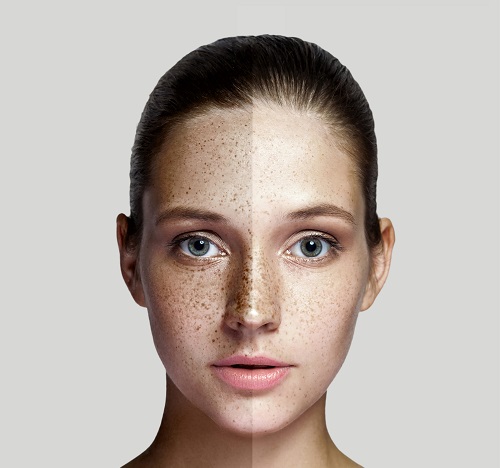Pigmentation can be a frustrating skin concern, leaving uneven patches or dark spots that affect your confidence. Whether caused by sun exposure, hormonal changes, or acne scars, pigmentation is a common issue that many seek to address. Fortunately, with the right approach, you can achieve clearer, more radiant skin. This guide shares essential tips for Skin Pigmentation in Dubai, offering practical advice to help you navigate your journey to a brighter complexion.
Understanding Skin Pigmentation
What Is Pigmentation?
Pigmentation refers to the coloring of your skin, determined by melanin production. When melanin is overproduced or unevenly distributed, it results in dark spots, melasma, or hyperpigmentation. Common triggers include UV exposure, inflammation, or hormonal shifts, such as those during pregnancy.
Types of Pigmentation
Knowing the type of pigmentation you’re dealing with can guide your treatment choices:
- Hyperpigmentation: Dark spots from acne, injury, or sun damage.
- Melasma: Larger, symmetrical patches often linked to hormonal changes.
- Post-inflammatory Hyperpigmentation (PIH): Dark marks left after skin inflammation, like acne or eczema.
- Freckles: Small, scattered spots often genetic or sun-induced.
Understanding your pigmentation type helps tailor an effective treatment plan.
Preparing for Pigmentation Removal
Consult a Professional
Before starting any treatment, seek advice from a skincare expert. A professional can assess your skin type, pigmentation cause, and severity to recommend suitable options. This step ensures you avoid treatments that could worsen your condition.
Patch Test New Products
Always perform a patch test when trying new skincare products or treatments. Apply a small amount to a discreet area, like behind your ear, and monitor for reactions over 24–48 hours. This precaution prevents irritation or adverse effects on sensitive skin.
Sun Protection Is Non-Negotiable
Sun exposure can worsen pigmentation, making sunscreen a must. Use a broad-spectrum SPF 30 or higher daily, even on cloudy days. Reapply every two hours if outdoors, and consider protective clothing or hats for extra coverage.
Effective Pigmentation Removal Treatments
Topical Treatments
Topical products are often the first step in addressing pigmentation. Look for ingredients known to brighten skin and reduce dark spots:
- Vitamin C: A powerful antioxidant that brightens and evens skin tone.
- Niacinamide: Reduces melanin production and soothes inflammation.
- Retinoids: Promote cell turnover to fade dark spots over time.
- Hydroquinone: A potent skin-lightening agent for stubborn pigmentation (use under professional guidance).
- Azelaic Acid: Helps reduce inflammation and pigmentation, especially for PIH.
Apply these consistently, following product instructions, for noticeable results over weeks or months.
Professional Procedures
For faster results, professional treatments can target deeper pigmentation:
- Chemical Peels: Exfoliate the skin’s surface to remove pigmented cells.
- Laser Therapy: Breaks down melanin deposits for precise spot treatment.
- Microneedling: Stimulates collagen and improves skin texture, aiding pigmentation reduction.
- Microdermabrasion: Gently removes the outer skin layer to reveal brighter skin.
Each procedure varies in intensity, so discuss options with a skincare professional to find what suits your skin.
Home Remedies and Natural Options
Some prefer natural approaches to complement professional treatments. Ingredients like aloe vera, licorice extract, or turmeric may offer mild brightening effects. However, results are slower and less predictable, so use these alongside proven methods rather than as replacements.
Lifestyle Changes for Long-Term Results
Maintain a Consistent Skincare Routine
Consistency is key to fading pigmentation. Cleanse, exfoliate gently (1–2 times weekly), and moisturize daily to support skin health. Incorporate pigmentation-targeting serums or creams into your routine for sustained improvement.
Stay Hydrated and Eat a Balanced Diet
Healthy skin starts from within. Drink plenty of water to keep skin hydrated and support cell turnover. Include foods rich in antioxidants, like berries, leafy greens, and nuts, to combat oxidative stress that can worsen pigmentation.
Manage Stress Levels
Stress can trigger hormonal changes that exacerbate pigmentation, especially melasma. Practice stress-relief techniques like yoga, meditation, or regular exercise to promote overall skin health.
Common Mistakes to Avoid
To maximize treatment success, steer clear of these pitfalls:
- Over-Exfoliating: Excessive scrubbing can irritate skin and worsen pigmentation.
- Skipping Sunscreen: UV rays can undo treatment progress.
- Expecting Instant Results: Pigmentation fades gradually, so patience is essential.
- Using Harsh Products: Avoid untested or overly aggressive treatments that may harm your skin.
Conclusion
Achieving clearer, more even-toned skin is possible with the right pigmentation removal strategies. Start by understanding your pigmentation type, prioritize sun protection, and explore treatments like topical products or professional procedures. Complement these with a healthy lifestyle and consistent skincare routine for lasting results. By following these essential tips, you’ll be well on your way to a radiant, confident complexion. Take the first step today, and embrace the journey to healthier skin!





Comments